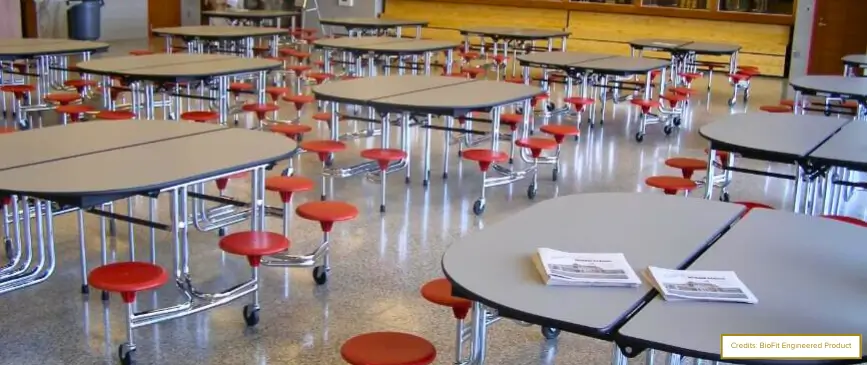Introduction
For elementary students, the school cafeteria is like a mini adventure. It’s a place where these growing champs can recharge, grab a bite, laugh with friends, and have a little fun. It’s no surprise that at this age, they thrive on play and social interaction. But with all that excitement under one roof, things can go from zero to chaos in the blink of an eye.
If you’ve ever tried managing a school cafeteria full of energetic little kids, you know keeping the cafeteria calm can feel like herding cats.
But don’t worry, as cafeteria experts, we have a simple solution: CAFETERIA RULES!
You don’t need to play the bad cop; guide the kids with simple rules, and they’ll learn respect, kindness, and self-control without realizing it.
In this guide, we’ll explain why cafeteria rules are essential at the elementary level, the benefits they bring, a list of adequate regulations, and some practical tips for implementation.
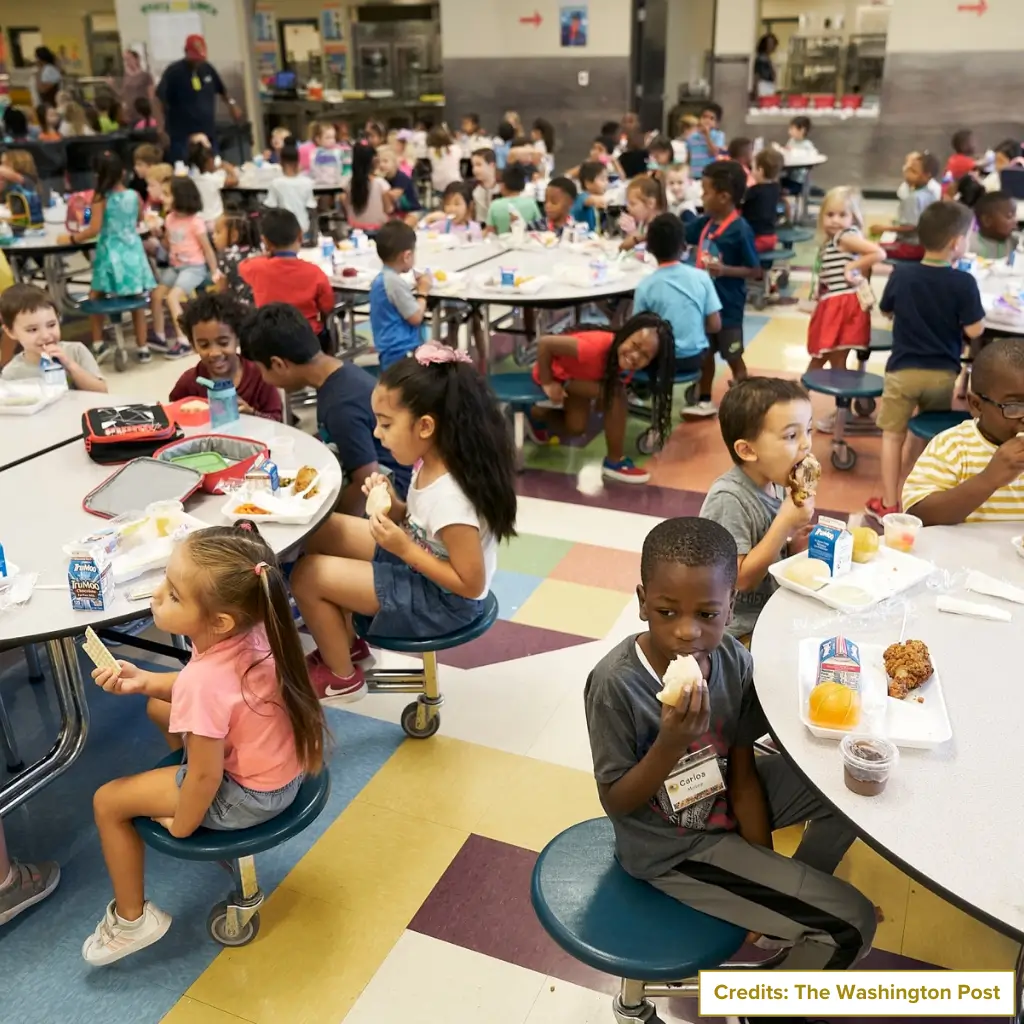
Why Do Cafeteria Rules Matter for Junior Schools?
You might wonder, “Why are rules even needed in the school cafeteria?” Well, here’s why:
The school cafeteria has a profound impact on students. The early school years are critical for kids’ development. It’s a time when they’re not only learning new things but also picking up important life lessons. That’s why setting rules in the cafeteria is just as crucial as having guidelines in the classroom.
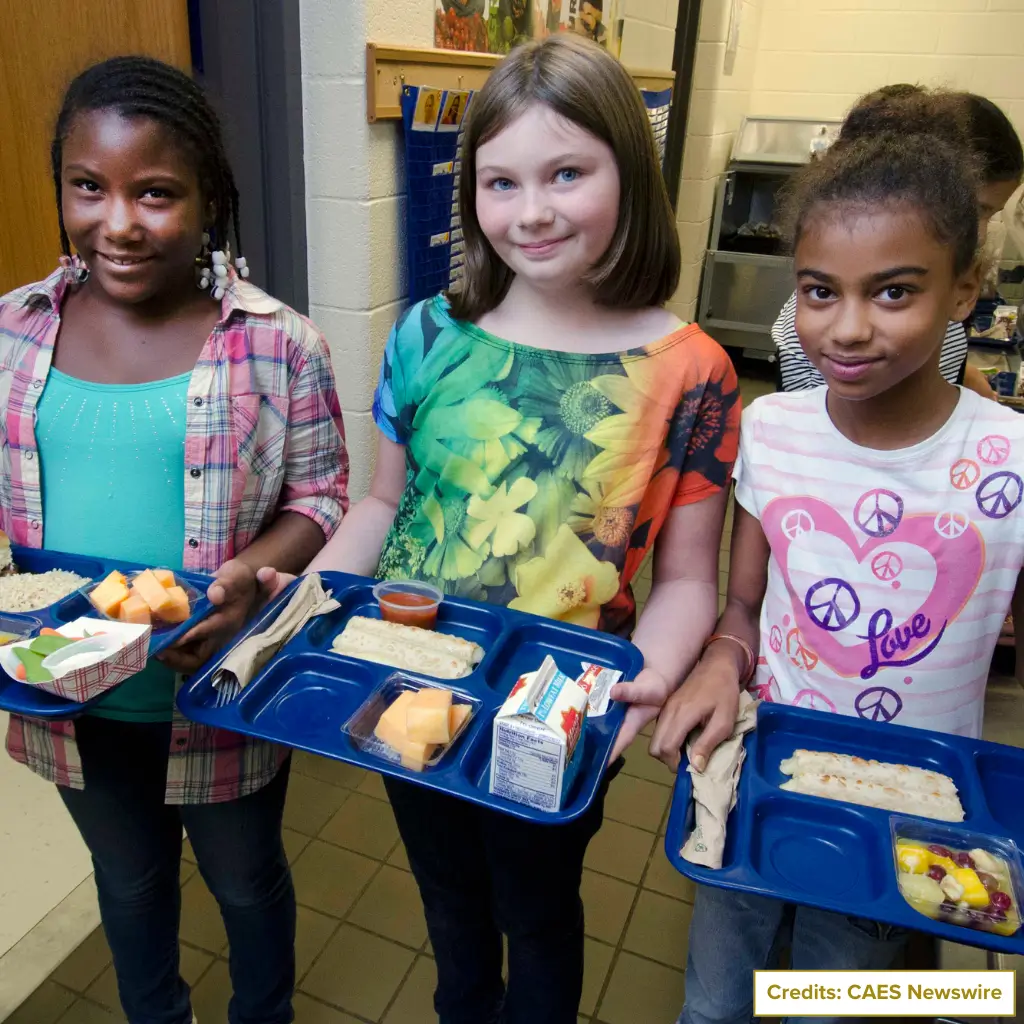
Running a cafeteria in an elementary school is more challenging than setting up a high school cafeteria – for good reason. By establishing clear cafeteria rules, you’re not just helping to create a positive culture but also good habits and personality building, which will help these young minds lifelong.
Here are a few key reasons why we emphasize cafeteria rules for elementary schools:
- Teaches students how to behave responsibly in shared spaces.
- Encourages good manners and hygiene during meals.
- Reduces the risk of accidents or food-related issues.
- Fosters a calm and orderly environment.
- Helps students learn cooperation and respect for others.
- Promote healthy eating habits.
- Keeps the cafeteria organized, allowing students to focus on eating and socializing positively.
Types of Cafeteria Rules for Elementary Students
Setting up cafeteria rules can be as fun as decorating the elementary school cafeteria. Since kids are just beginning to explore the world, it’s important to focus on a few key categories that teach safety, respect, and responsibility.
We recommend organizing these under an EAT SMART category which covers:
E – Etiquette: Encouraging polite behavior and good manners while eating.
A – Awareness: Focusing on nutrition and understanding allergies.
T – Tidiness: Maintaining a clean eating environment and cleaning up after oneself.
S – Safety: Ensuring the physical safety of all students in the cafeteria.
M – Mindfulness: Being aware of one’s actions and their impact on others.
A – Appreciation: Showing gratitude towards the cafeteria staff and valuing the food provided.
R – Respect: Treating peers, staff, and property with consideration.
T – Togetherness: Promoting a sense of community and cooperation during meals.
List of School Cafeteria Rules for Elementary School
Here are some effective cafeteria rules that can help create a positive atmosphere during school lunch. When deciding on these rules, remember to keep them straightforward, concise, and easy for students to understand and follow. Here’s a list of 30 rules that can be implemented in an elementary school cafeteria to promote smooth operations and manage behaviors:
- Walk, don’t run – Always walk in the cafeteria to avoid accidents.
- Use Your Inside Voice – Keep the volume down so everyone can enjoy their meal. Let’s keep the chatter friendly, not thunderous.
- Stay in line – Keep it orderly by waiting your turn in line. Good things come to those who wait.
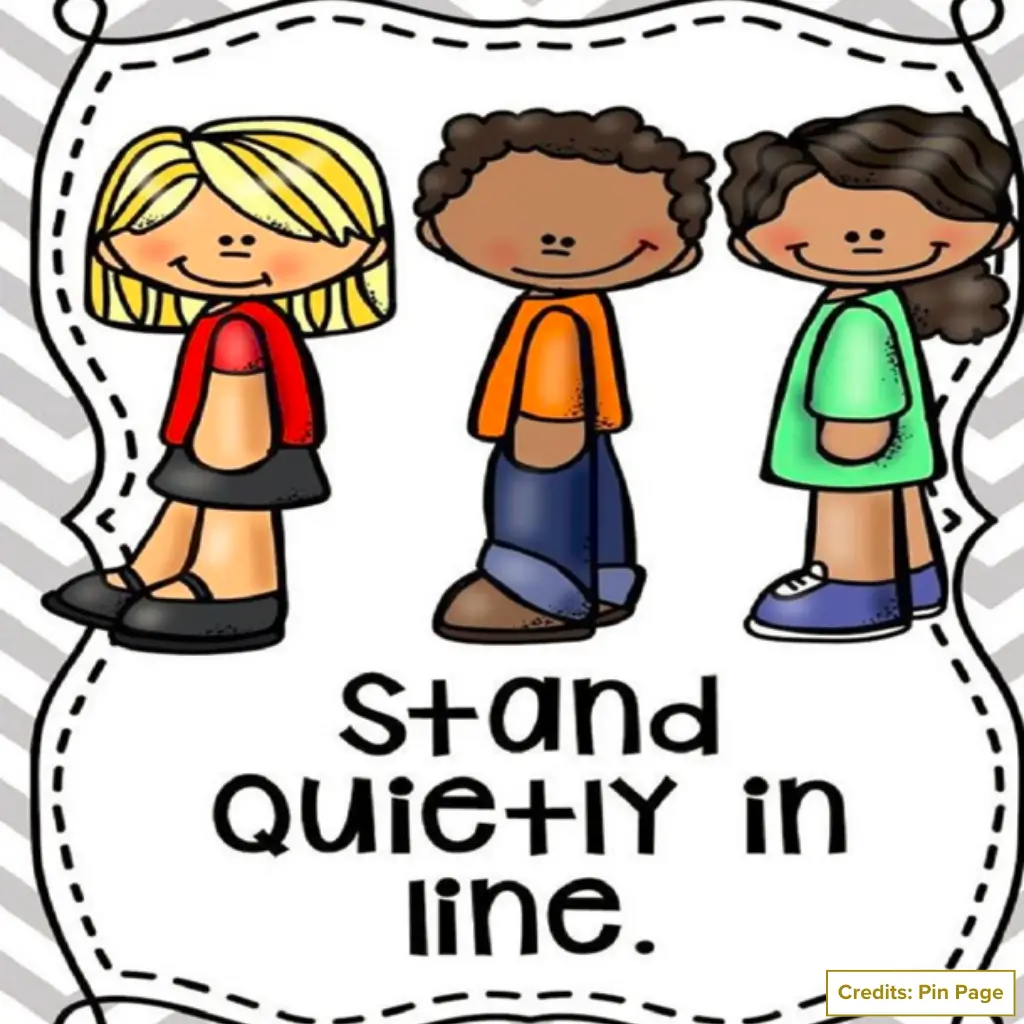
- Say please and thank you – Be polite to cafeteria staff and classmates.
- Clean up your space—Pick up after yourself and leave the table as clean as you found it.
- Raise your hand for help – If you need assistance, raise your hand rather than shouting.
- Stay seated while eating – Remain seated during meals unless you have permission to get up.
- Keep hands and feet to yourself – Respect others’ space by avoiding unnecessary contact.
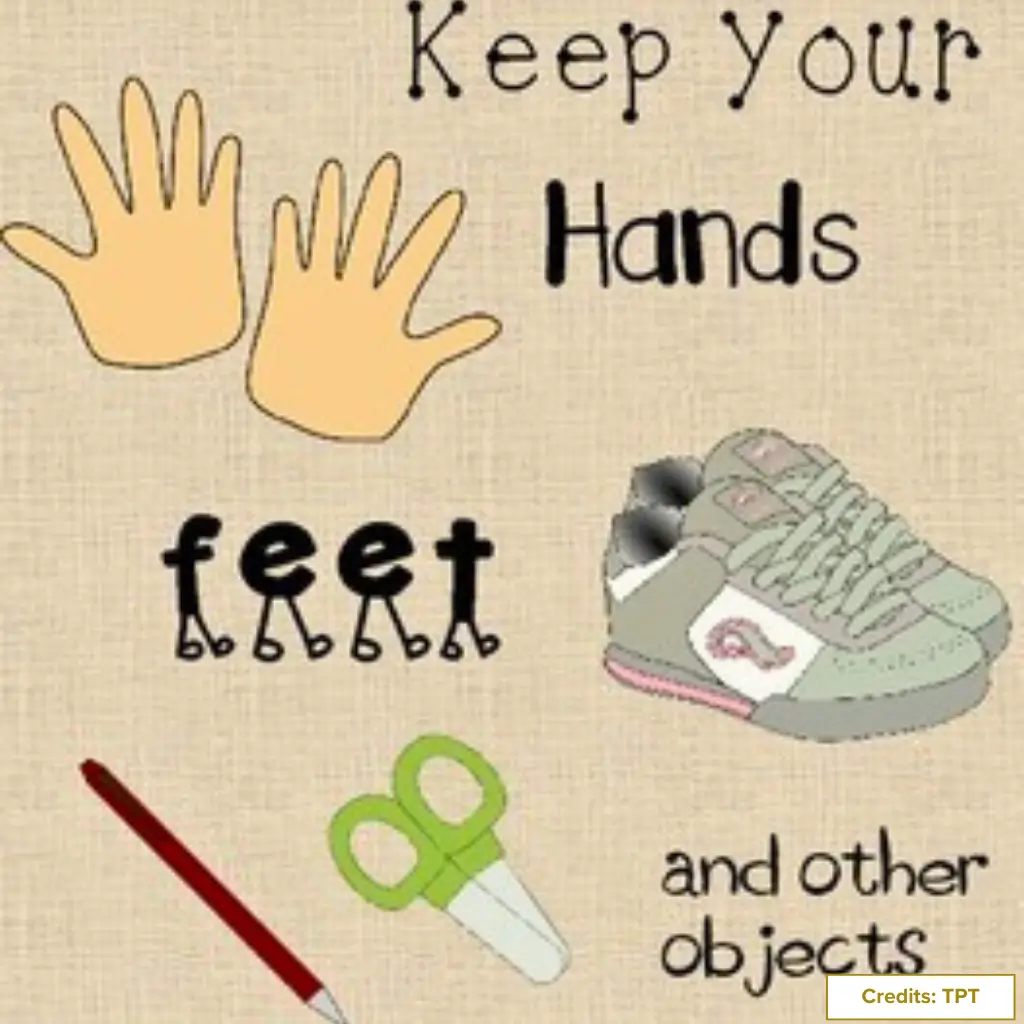
- Use utensils properly – Eat using the provided utensils and avoid playing with them.
- Eat your own food – Don’t trade or share food to prevent allergy or dietary issues.
- Wait until you’re dismissed—Don’t leave the cafeteria until the adult in charge gives you.
- Respect the lunch monitors – Follow the instructions given by cafeteria monitors and staff.
- Do not yell across the room. Speak to those near you without raising your voice to others far away.
- Be respectful of food choices – Don’t make negative comments about other students’ meals.
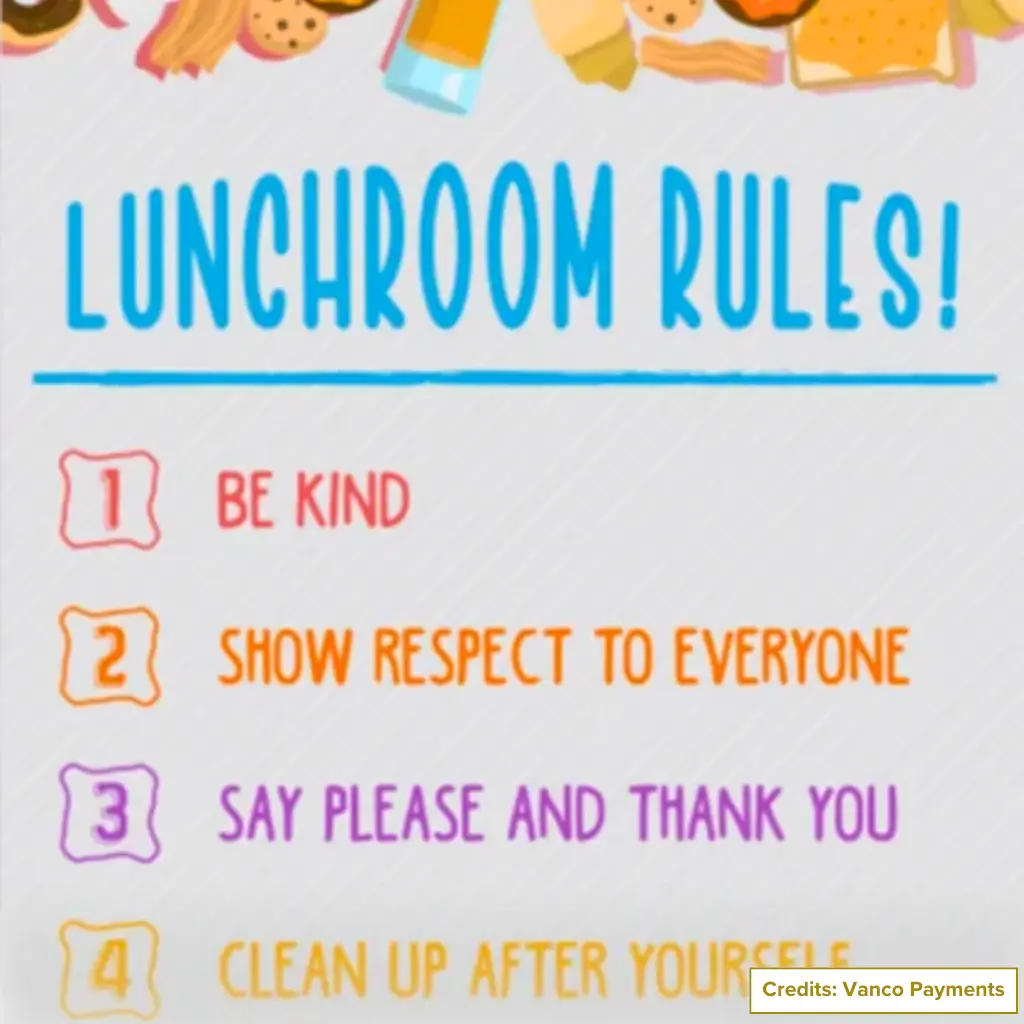
- Use the trash cans properly – Throw away your trash in the right bins and recycle when possible.
- Wash or sanitize your hands before eating – Clean hands help maintain hygiene before meals.
- Wait your turn at the condiment station – Be patient while others use the condiment or napkin station.
- No food throwing – Never throw food, utensils, or trash, as this disrupts the cafeteria.
- Eat neatly – Try to keep food on your plate or tray and not on the table or floor.
- No Jokes – Keep the humor friendly and light-hearted. Let’s laugh together, not at each other.
- Chew with your mouth closed – Practice good table manners by chewing quietly.
- Don’t rush through meals – Stay active, eat clean and take your time to finish without rushing or playing with your food.
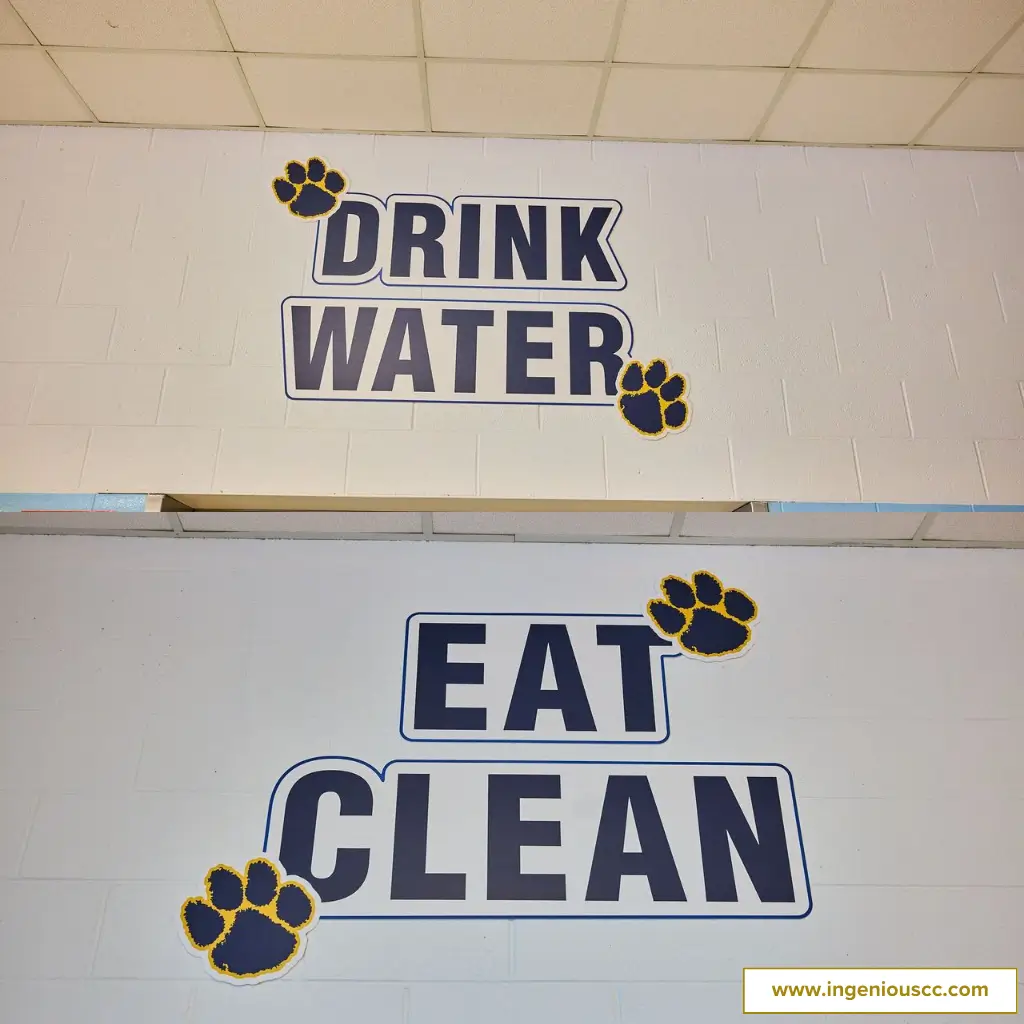
- Be mindful of allergies – Be aware of classmates with food allergies and avoid bringing foods that could cause harm.
- Help others when needed – Offer to help a classmate clean up or assist them.
- Take only what you can eat – Avoid food waste by taking portions you can finish.
- Respect cafeteria property – Carefully Treat the tables, chairs, and trays.
- Use appropriate language – Speak kindly and avoid using inappropriate words.
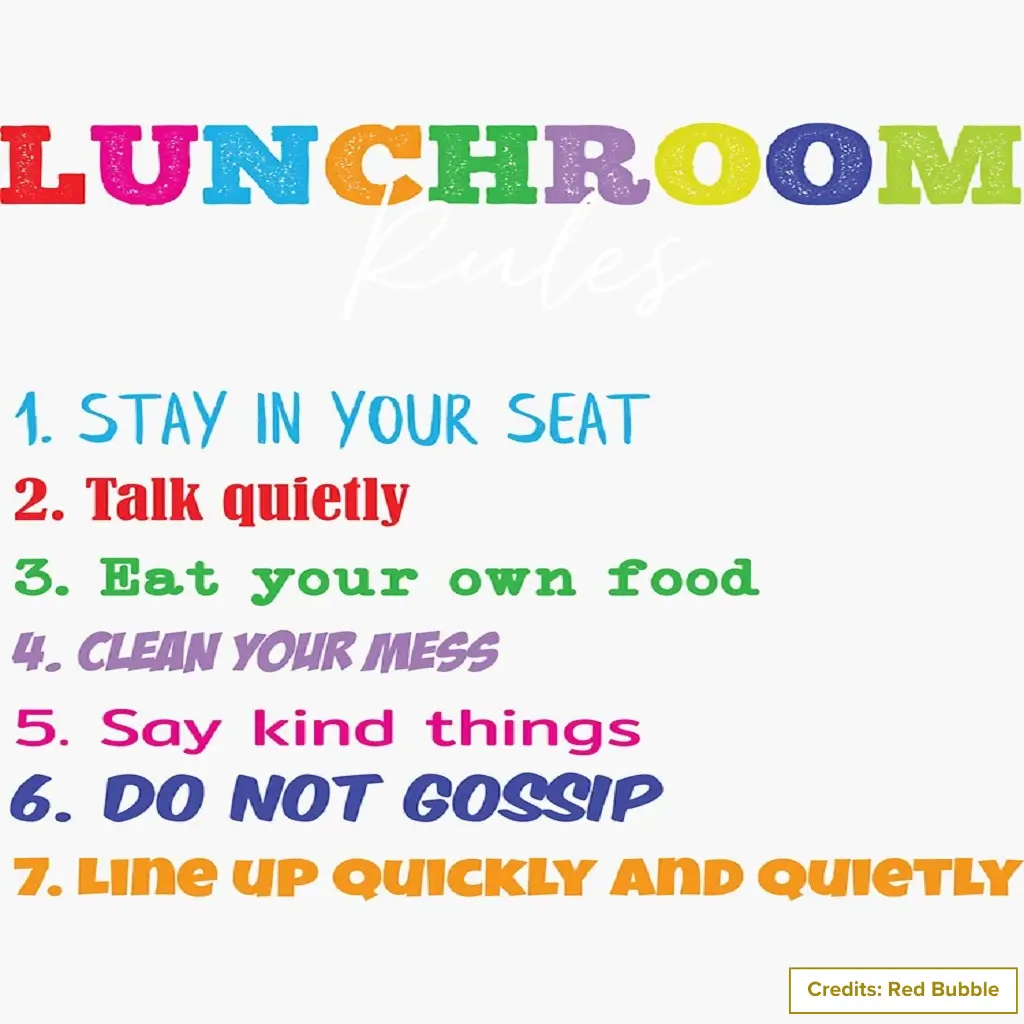
- Line up quietly – Form a quiet line when entering and exiting the cafeteria to keep things calm.
- Stay in your assigned seat – Sit where you are supposed to without moving between tables.
- Be kind to cafeteria staff – Always treat cafeteria workers with kindness and appreciation for their hard work.
- Have Fun – Lastly, enjoy your lunch break. This is your time to relax and recharge for the rest of the day.
Ideas to Display Cafeteria Rules at Elementary School
Here are some amazing strategies with a decorative flair for displaying these rules. If you want to get creative with decorating your school cafeteria, feel free to hire our cafeteria design services!
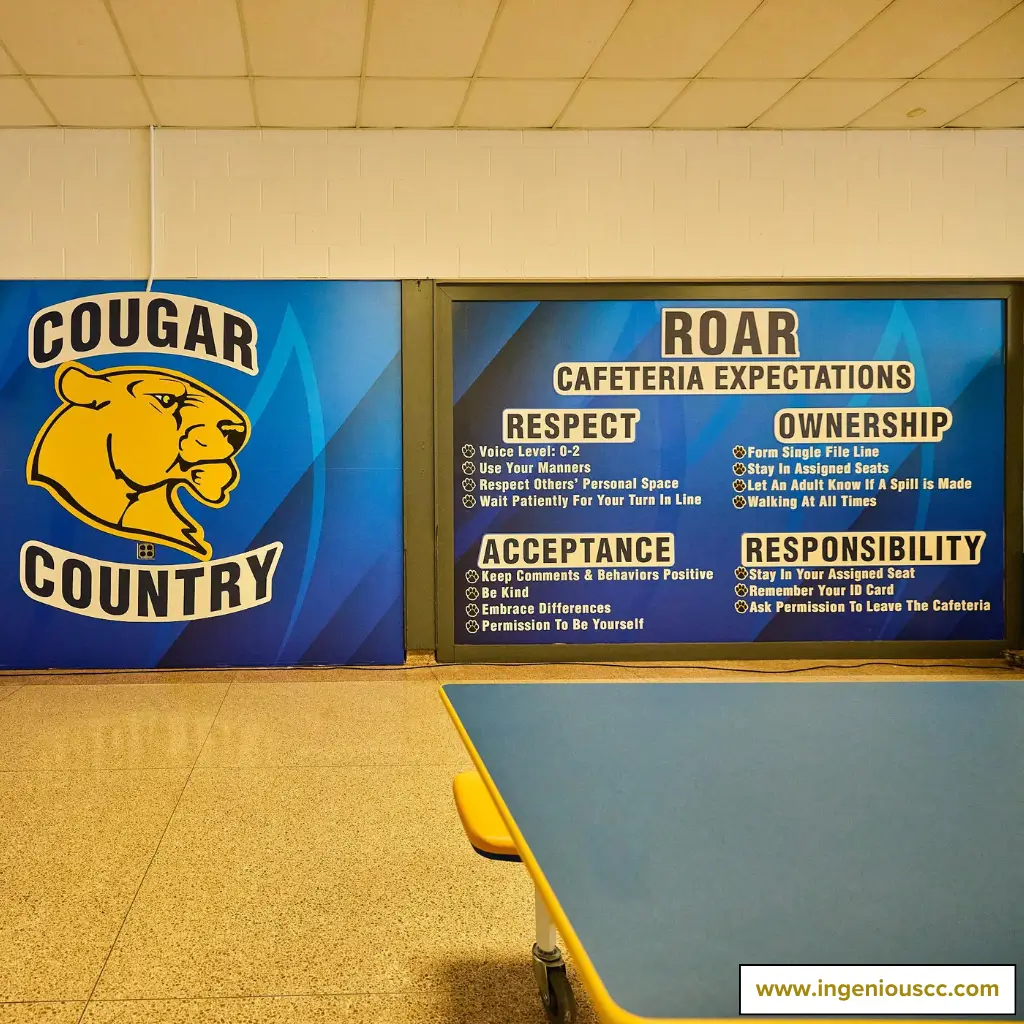
- Wall Art: Create vibrant wall art displays of the rules.
- Ceilings & Windows: Use these areas for additional creative rule displays.
- Incorporate Quotes: Highlight inspiring quotes to express the rules decoratively.
- Kitchen Counter Displays: Position rules on kitchen shelves where students can easily see them.
- Bulletin Board Decoration: Dedicate a board to cafeteria rules for easy updates.
- Seasonal Reminders: Make rules festive during , Thanksgiving, Halloween, and Christmas holidays.
Conclusion
In the lively world of elementary school cafeterias, simple rules can transform mealtime into an enjoyable and structured experience for everyone. By teaching students respect, responsibility, and good manners, these rules set them up for success in and out of the cafeteria.
Remember, consistency is critical. With some patience and creative approaches, you’ll see how quickly kids can adapt to the positive culture you’re fostering. After all, lunchtime should be a fun and relaxing break for everyone – kids and staff alike.
FAQs
Why are cafeteria rules important for elementary students?
Cafeteria rules help students develop skills like responsibility, respect, and cooperation while ensuring a safe, organized, and enjoyable mealtime experience.
How can I make students follow the rules?
Be consistent, use positive reinforcement, and make the rules engaging by incorporating visuals or fun names like “EAT SMART” to help them remember.
What should I do if a student constantly breaks the rules?
Address the behavior calmly, explain why the rule is essential, and offer gentle reminders. Sometimes, a private conversation can help the student understand better.
Can we customize cafeteria rules for our school?
Yes, you can tailor the rules to fit your school’s needs while keeping the core principles of safety, respect, and responsibility.


